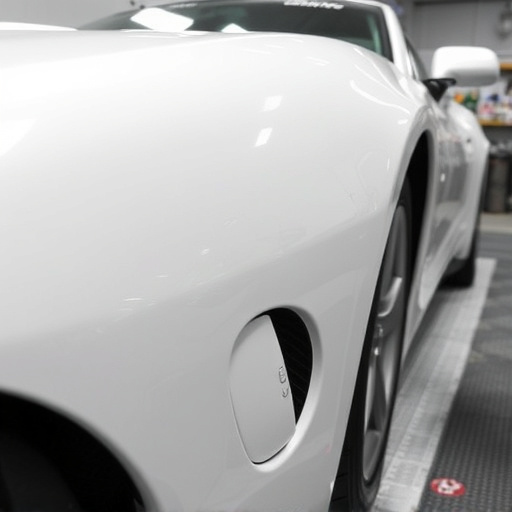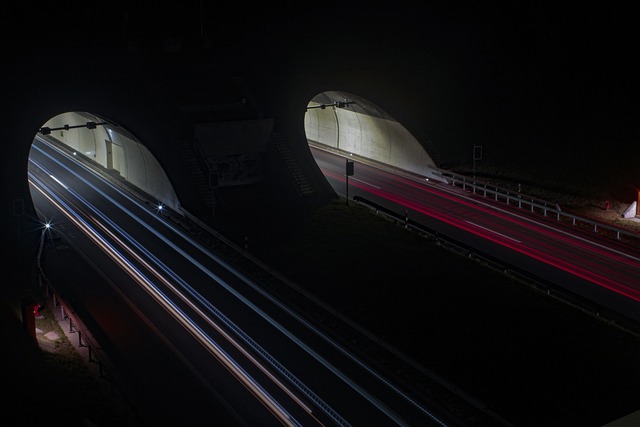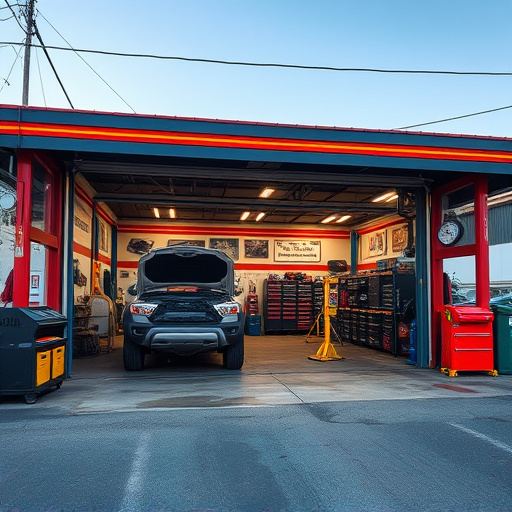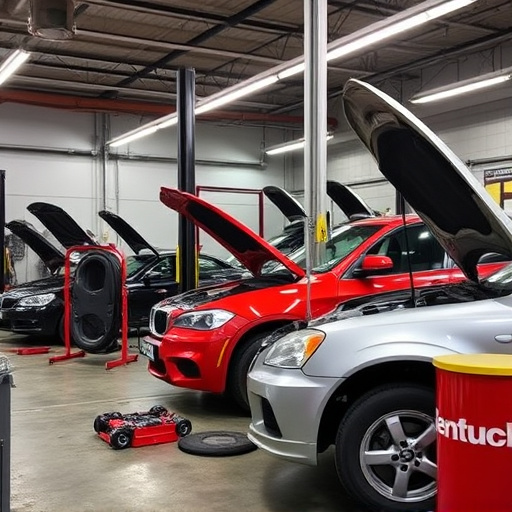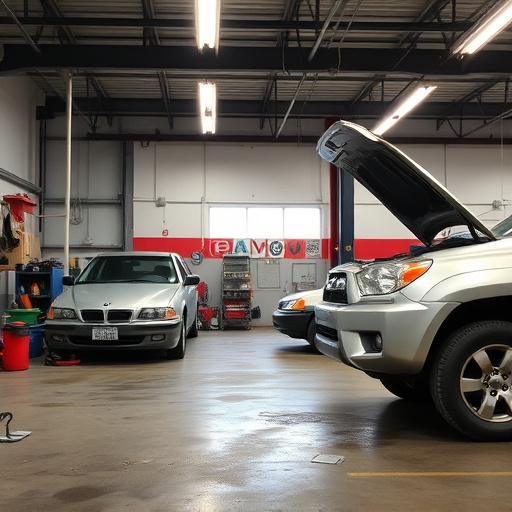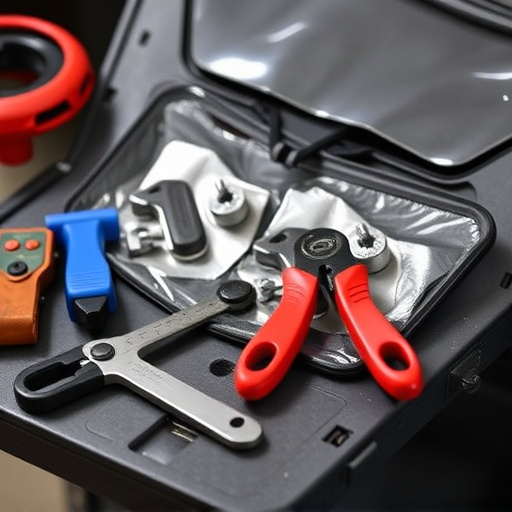Tesla battery protection systems are essential for maintaining battery health and preventing damage from overcharging, heat, moisture, short circuits, etc. Regular maintenance and prompt repairs, including replacement and cleaning of components, ensure optimal battery performance and longevity. A simple guide outlines the repair process, while specialized vehicle body shops offer accurate diagnosis and effective solutions for older models.
Tesla vehicles are renowned for their innovative technology, including advanced battery systems. However, older model Teslas may face battery protection issues over time. This article delves into the intricacies of Tesla battery protection repair, addressing common problems and providing a comprehensive step-by-step guide. By understanding these systems and learning effective maintenance practices, owners can extend the lifespan of their vehicles’ crucial energy source, ensuring optimal performance and peace of mind on the road.
- Understanding Tesla Battery Protection Systems
- Common Issues and Causes of Battery Damage
- Step-by-Step Guide to Repair and Maintenance
Understanding Tesla Battery Protection Systems
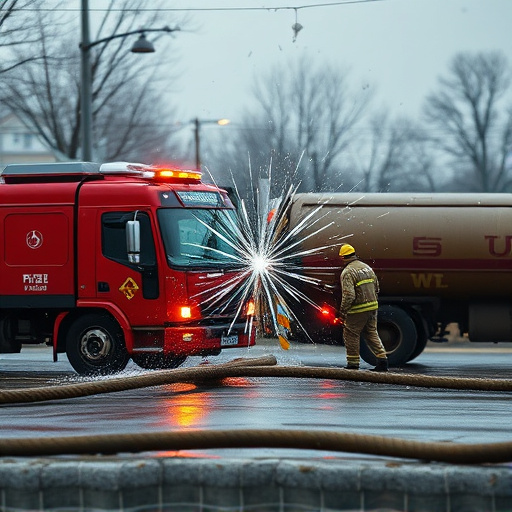
Tesla Battery Protection Systems are designed to safeguard the vehicle’s battery from potential harm and prolong its lifespan. These systems encompass various mechanisms to prevent damage, ensuring optimal performance and reliability. One critical aspect is monitoring voltage levels to maintain a balanced state of charge, preventing overcharging or undercharging which can lead to degradation. Additionally, these systems incorporate advanced sensors that detect anomalies like short circuits or excessive heat, triggering protective measures such as isolating the battery to avert further complications.
Regular maintenance and timely repairs are vital for optimal Tesla battery protection. While many owners focus on external vehicle body repair after accidents, such as hail damage repair, it’s equally important to address internal systems, including battery protection. Collison repair centers equipped with specialized tools can diagnose issues and provide Tesla battery protection repair services, ensuring your vehicle’s power source remains robust and efficient over its lifespan.
Common Issues and Causes of Battery Damage

Battery damage in Tesla vehicles, like any other car, can arise from a variety of issues. One common problem is overcharging, which can happen if the vehicle’s charging system isn’t properly calibrated or if third-party chargers are used incorrectly. This can lead to swelling, leaking, and even explosion of the battery cells. Extreme temperature fluctuations are another significant factor; both high heat and cold can degrade battery performance and longevity. Exposure to moisture or water can also cause serious damage, especially in regions with frequent rain or snow.
Another major concern is internal short circuits within the battery pack. These can be caused by manufacturing defects, physical impacts, or even corrosion on the electrode contacts. Over time, the build-up of sulfuric acid and other byproducts of the charging process can insulate battery cells, reducing their capacity and efficiency. Proper Tesla battery protection repair involves addressing these issues through a combination of replacement, cleaning, recalibration, and maintenance to ensure optimal battery health for older model vehicles. For accurate diagnosis and effective solutions, it’s best to consult a reliable vehicle body shop specializing in automotive bodywork and battery repairs.
Step-by-Step Guide to Repair and Maintenance

Repairs for Tesla battery protection systems can be a straightforward process when approached with the right guide. First, locate the battery compartment, usually under the vehicle’s hood or in the trunk, depending on the model. Then, assess any visible damage to the protective casing and components surrounding the battery. Older models may have sustained corrosion, cracks, or loose connections over time, indicating the need for repair or replacement.
Next, follow these steps: 1. Disconnect the battery to ensure safety; 2. Remove any damaged parts, taking note of their placement for future reference; 3. Clean and inspect all surfaces, addressing any signs of wear or corrosion; 4. Install new protective components as required, ensuring a secure fit; 5. Reconnect the battery, verifying functionality through a test drive to ensure the system operates without issue. Regular maintenance, including periodic checks and cleaning, is key to preventing future car damage repair related to Tesla battery protection systems, especially after potential collision center incidents or vehicle bodywork mishaps.
For older Tesla vehicles, proper care and maintenance of the battery protection system are essential. By understanding common issues and implementing a step-by-step repair guide, owners can ensure their cars’ longevity. Regular checks and proactive measures, such as monitoring voltage levels and preventing extreme temperature exposure, are key to avoiding damage. With these simple practices and effective repair techniques, Tesla enthusiasts can keep their older models running smoothly, taking advantage of advanced electric vehicle technology for years to come. This focus on Tesla battery protection repair is a vital step in preserving the performance and value of these innovative vehicles.
